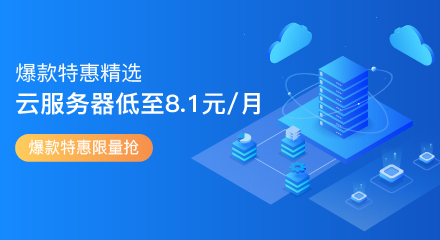本文主要内容:带大家掌握spring应用上下文的生命周期。
为什么需要掌握这个?
1、应对面试,面试中经常会问到
2、项目中想扩展spring的,那么这部分内容必须掌握
3、更容易阅读spirng源码
1、什么是spring应用上下文?
接口org.springframework.context.ApplicationContext表示spring上下文,下面2个实现类
org.springframework.context.support.ClassPathXmlApplicationContextorg.springframework.context.annotation.AnnotationConfigApplicationContext
2、应用上文生命周期(14个阶段)
1、创建spring应用上下文
2、上下文启动准备阶段
3、BeanFactory创建阶段
4、BeanFactory准备阶段
5、BeanFactory后置处理阶段
6、BeanFactory注册BeanPostProcessor阶段
7、初始化内建Bean:MessageSource
8、初始化内建Bean:Spring事件广播器
9、Spring应用上下文刷新阶段
10、Spring事件监听器注册阶段
11、单例bean实例化阶段
12、BeanFactory初始化完成阶段
13、Spring应用上下文启动完成阶段
14、Spring应用上下文关闭阶段
3、Spring应用上下文的使用
看下这段代码,是不是很熟悉,这就是spring上下文最常见的用法,稍后我们以这段代码为例,结合spring源码,来细说每个阶段的细节。
@Configuration@ComponentScanpublic class MainConfig {public static void main(String[] args) {//1.创建spring上下文AnnotationConfigApplicationContext configApplicationContext = new AnnotationConfigApplicationContext();//2.上下文中注册beanconfigApplicationContext.register(MainConfig.class);//3.刷新spring上下文,内部会启动spring上下文configApplicationContext.refresh();//4.关闭spring上下文System.out.println("stop ok!");}}
4、阶段1:创建Spring应用上下文
对应这段代码
AnnotationConfigApplicationContext configApplicationContext = new AnnotationConfigApplicationContext();
看一下其类图,这里主要列出了AnnotationConfigApplicationContext2个父类

当调用子类的构造器的时候,默认会自动先调用父类的构造器,先来看一下GenericApplicationContext构造器源码,如下,将beanFactory创建好了。
public GenericApplicationContext() {this.beanFactory = new DefaultListableBeanFactory();}
再来看看AnnotationConfigApplicationContext构造器源码,如下:
public AnnotationConfigApplicationContext() {//创建AnnotatedBeanDefinitionReader:用来读取及注册通过注解方式定义的beanthis.reader = new AnnotatedBeanDefinitionReader(this); //@1//创建ClassPathBeanDefinitionScanner:bean定义扫描器,可以扫描包中的类,对满足条件的类,会将其注册到spring容器中this.scanner = new ClassPathBeanDefinitionScanner(this);}
@1:new AnnotatedBeanDefinitionReader(this),进入这个方法内部,最终会走到下面这个方法,非常关键的一个方法,会向spring容器中注册5个关键的bean,这几个bean都是非常很重要的。
org.springframework.context.annotation.AnnotationConfigUtils#registerAnnotationConfigProcessors(org.springframework.beans.factory.support.BeanDefinitionRegistry, java.lang.Object)public static Set<BeanDefinitionHolder> registerAnnotationConfigProcessors(BeanDefinitionRegistry registry, @Nullable Object source) {//1、注册ConfigurationClassPostProcessor,这是个非常关键的类,实现了BeanDefinitionRegistryPostProcessor接口// ConfigurationClassPostProcessor这个类主要做的事情:负责所有bean的注册,如果想看bean注册源码的,可以在其postProcessBeanDefinitionRegistry方法中设置断点if (!registry.containsBeanDefinition(CONFIGURATION_ANNOTATION_PROCESSOR_BEAN_NAME)) {RootBeanDefinition def = new RootBeanDefinition(ConfigurationClassPostProcessor.class);def.setSource(source);beanDefs.add(registerPostProcessor(registry, def, CONFIGURATION_ANNOTATION_PROCESSOR_BEAN_NAME));}//2、注册AutowiredAnnotationBeanPostProcessor:负责处理@Autowire注解if (!registry.containsBeanDefinition(AUTOWIRED_ANNOTATION_PROCESSOR_BEAN_NAME)) {RootBeanDefinition def = new RootBeanDefinition(AutowiredAnnotationBeanPostProcessor.class);def.setSource(source);beanDefs.add(registerPostProcessor(registry, def, AUTOWIRED_ANNOTATION_PROCESSOR_BEAN_NAME));}//3、注册CommonAnnotationBeanPostProcessor:负责处理@Resource注解if (jsr250Present && !registry.containsBeanDefinition(COMMON_ANNOTATION_PROCESSOR_BEAN_NAME)) {RootBeanDefinition def = new RootBeanDefinition(CommonAnnotationBeanPostProcessor.class);def.setSource(source);beanDefs.add(registerPostProcessor(registry, def, COMMON_ANNOTATION_PROCESSOR_BEAN_NAME));}//4、注册EventListenerMethodProcessor:负责处理@EventListener标注的方法,即事件处理器if (!registry.containsBeanDefinition(EVENT_LISTENER_PROCESSOR_BEAN_NAME)) {RootBeanDefinition def = new RootBeanDefinition(EventListenerMethodProcessor.class);def.setSource(source);beanDefs.add(registerPostProcessor(registry, def, EVENT_LISTENER_PROCESSOR_BEAN_NAME));}//5、注册DefaultEventListenerFactory:负责将@EventListener标注的方法包装为ApplicationListener对象if (!registry.containsBeanDefinition(EVENT_LISTENER_FACTORY_BEAN_NAME)) {RootBeanDefinition def = new RootBeanDefinition(DefaultEventListenerFactory.class);def.setSource(source);beanDefs.add(registerPostProcessor(registry, def, EVENT_LISTENER_FACTORY_BEAN_NAME));}return beanDefs;}
再来捋一下上面这段代码,主要向spring容器中注册了5个关键的bean
1、ConfigurationClassPostProcessor:这是个非常关键的类,建议去看一下他的源码,基本上我们自定义的bean都是通过这个类注册的,下面这些注解都是在这个类中处理的
@Configuration@Component@PropertySource@PropertySources@ComponentScan@ComponentScans@Import@ImportResource@Bean
2、AutowiredAnnotationBeanPostProcessor:负责处理@Autowire注解
3、注册CommonAnnotationBeanPostProcessor:负责处理@Resource注解
4、注册EventListenerMethodProcessor:负责处理@EventListener标注的方法,即事件处理器
5、注册DefaultEventListenerFactory:负责将@EventListener标注的方法包装为ApplicationListener对象
5、阶段2~阶段13
阶段2到阶段13,这中间的12个阶段都位于refresh方法中,所以refresh方法非常很重要,需要多花时间研究这个方法。
refresh方法源码如下:
org.springframework.context.support.AbstractApplicationContext#refresh@Overridepublic void refresh() throws BeansException, IllegalStateException {// 阶段2:Spring应用上下文启动准备阶段prepareRefresh();// 阶段3:BeanFactory创建阶段ConfigurableListableBeanFactory beanFactory = obtainFreshBeanFactory();// 阶段4:BeanFactory准备阶段prepareBeanFactory(beanFactory);try {// 阶段5:BeanFactory后置处理阶段postProcessBeanFactory(beanFactory);// 阶段6:BeanFactory注册BeanPostProcessor阶段invokeBeanFactoryPostProcessors(beanFactory);// 阶段7:注册BeanPostProcessorregisterBeanPostProcessors(beanFactory);// 阶段8:初始化内建Bean:MessageSourceinitMessageSource();// 阶段9:初始化内建Bean:Spring事件广播器initApplicationEventMulticaster();// 阶段10:Spring应用上下文刷新阶段,由子类实现onRefresh();// 阶段11:Spring事件监听器注册阶段registerListeners();// 阶段12:实例化所有剩余的(非lazy init)单例。finishBeanFactoryInitialization(beanFactory);// 阶段13:刷新完成阶段finishRefresh();}}
6、阶段2:Spring应用上下文启动准备阶段
protected void prepareRefresh() {// 标记启动时间this.startupDate = System.currentTimeMillis();// 是否关闭:falsethis.closed.set(false);// 是否启动:truethis.active.set(true);// 初始化PropertySource,留个子类去实现的,可以在这个方法中扩展属性配置信息,丢到this.environment中initPropertySources();// 验证环境配置中是否包含必须的配置参数信息,比如我们希望上下文启动中,this.environment中必须要有某些属性的配置,才可以启动,那么可以在这个里面验证getEnvironment().validateRequiredProperties();// earlyApplicationListeners用来存放早期的事件监听器if (this.earlyApplicationListeners == null) {this.earlyApplicationListeners = new LinkedHashSet<>(this.applicationListeners);}else {// Reset local application listeners to pre-refresh state.this.applicationListeners.clear();this.applicationListeners.addAll(this.earlyApplicationListeners);}// earlyApplicationEvents用来存放早期的事件this.earlyApplicationEvents = new LinkedHashSet<>();}
这里说一下什么是早期事件?什么是早期的事件监听器呢?
当使用spring上下文发布事件的时候,如下代码
applicationContext.publishEvent(事件对象)
其内部最终会用到AbstractApplicationContext下面这个属性来发布事件,但是可能此时applicationEventMulticaster还没有创建好,是空对象,所以此时是无法广播事件的,那么此时发布的时间就是早期的时间,就会被放在this.earlyApplicationEvents中暂时存放着,当时间广播器applicationEventMulticaster创建好了之后,才会会将早期的事件广播出去
private ApplicationEventMulticaster applicationEventMulticaster;
同理,当applicationEventMulticaster还未准备好的时候,调用下面下面代码向spring上下文中添加事件监听器的时候,这时放进去的监听器就是早期的事件监听器。
applicationContext.addApplicationListener(事件监听器对象)
说了这么多,理解起来很简单,就是当事件广播器applicationEventMulticaster还未准备好的时候,此时向上下文中添加的事件就是早期的事件,会被放到this.earlyApplicationEvents中,此时这个事件暂时没办法广播。
7、阶段3:BeanFactory创建阶段
这个阶段负责将BeanFactory创建好,返回给spring应用上下文
ConfigurableListableBeanFactory beanFactory = obtainFreshBeanFactory();
obtainFreshBeanFactory源码:
protected ConfigurableListableBeanFactory obtainFreshBeanFactory() {//刷新BeanFactory,由子类实现refreshBeanFactory();//返回spring上下文中创建好的BeanFacotryreturn getBeanFactory();}
8、阶段4:BeanFactory准备阶段
prepareBeanFactory(beanFactory);
8.1、源码
protected void prepareBeanFactory(ConfigurableListableBeanFactory beanFactory) {// 设置类加载器beanFactory.setBeanClassLoader(getClassLoader());// 设置spel表达式解析器beanFactory.setBeanExpressionResolver(new StandardBeanExpressionResolver(beanFactory.getBeanClassLoader()));// 设置属性编辑器注册器beanFactory.addPropertyEditorRegistrar(new ResourceEditorRegistrar(this, getEnvironment()));// @1:添加一个BeanPostProcessor:ApplicationContextAwareProcessor,当你的bean实现了spring中xxxAware这样的接口,那么bean创建的过程中,将由ApplicationContextAwareProcessor来回调这些接口,将对象注入进去beanFactory.addBeanPostProcessor(new ApplicationContextAwareProcessor(this));// @2:自动注入的时候,下面这些接口定义的方法,将会被跳过自动注入,为什么?因为这部分接口将由ApplicationContextAwareProcessor来回调注入beanFactory.ignoreDependencyInterface(EnvironmentAware.class);beanFactory.ignoreDependencyInterface(EmbeddedValueResolverAware.class);beanFactory.ignoreDependencyInterface(ResourceLoaderAware.class);beanFactory.ignoreDependencyInterface(ApplicationEventPublisherAware.class);beanFactory.ignoreDependencyInterface(MessageSourceAware.class);beanFactory.ignoreDependencyInterface(ApplicationContextAware.class);// @3:注册依赖注入的时候查找的对象,比如你的bean中想用ResourceLoader,那么可以写:@Autowire private ResourceLoader resourceLoader,那么spring容器会将spring容器上下文注入进去beanFactory.registerResolvableDependency(BeanFactory.class, beanFactory);beanFactory.registerResolvableDependency(ResourceLoader.class, this);beanFactory.registerResolvableDependency(ApplicationEventPublisher.class, this);beanFactory.registerResolvableDependency(ApplicationContext.class, this);// @4:注入一个beanpostprocessor:ApplicationListenerDetectorbeanFactory.addBeanPostProcessor(new ApplicationListenerDetector(this));// @5:将Environment注册到spring容器,对应的bena名称是environmentif (!beanFactory.containsLocalBean(ENVIRONMENT_BEAN_NAME)) {beanFactory.registerSingleton(ENVIRONMENT_BEAN_NAME, getEnvironment());}// @6:将系统属性注册到spring容器,对应的bean名称是systemPropertiesif (!beanFactory.containsLocalBean(SYSTEM_PROPERTIES_BEAN_NAME)) {beanFactory.registerSingleton(SYSTEM_PROPERTIES_BEAN_NAME, getEnvironment().getSystemProperties());}// @7:将系统环境变量配置信息注入到spring容器,对应的bean名称是systemEnvironmentif (!beanFactory.containsLocalBean(SYSTEM_ENVIRONMENT_BEAN_NAME)) {beanFactory.registerSingleton(SYSTEM_ENVIRONMENT_BEAN_NAME, getEnvironment().getSystemEnvironment());}}
8.2、先来看看@1的代码
beanFactory.addBeanPostProcessor(new ApplicationContextAwareProcessor(this));
向spring容器中注入了一个ApplicationContextAwareProcessor,这是一个BeanPostProcessor(Bean处理器),这个接口中定义了很多方法,会在bean创建的不同阶段被调用,常用来扩展bean的创建过程。想升入了解的朋友,可以先去看一下这篇文章:Bean生命周期。
在回到ApplicationContextAwareProcessor这个接口上来,看一下其的源码,大家就知道是干什么的,如下,当我们的bean实现了Aware这样的接口的时候,接口中的方法会被回调,用来在自定义的bean中注入spring上下文中的一些对象,比如我们在我们的bean中用到Environment,那么只需实现EnvironmentAware接口,那么Environment会被自动注入进去
if (bean instanceof EnvironmentAware) {((EnvironmentAware) bean).setEnvironment(this.applicationContext.getEnvironment());}if (bean instanceof EmbeddedValueResolverAware) {((EmbeddedValueResolverAware) bean).setEmbeddedValueResolver(this.embeddedValueResolver);}if (bean instanceof ResourceLoaderAware) {((ResourceLoaderAware) bean).setResourceLoader(this.applicationContext);}if (bean instanceof ApplicationEventPublisherAware) {((ApplicationEventPublisherAware) bean).setApplicationEventPublisher(this.applicationContext);}if (bean instanceof MessageSourceAware) {((MessageSourceAware) bean).setMessageSource(this.applicationContext);}if (bean instanceof ApplicationContextAware) {((ApplicationContextAware) bean).setApplicationContext(this.applicationContext);}
8.3、再来看看@3的代码
beanFactory.registerResolvableDependency(BeanFactory.class, beanFactory);beanFactory.registerResolvableDependency(ResourceLoader.class, this);beanFactory.registerResolvableDependency(ApplicationEventPublisher.class, this);beanFactory.registerResolvableDependency(ApplicationContext.class, this);
这个用来向spring容器中添加依赖查找的对象,上面代码的第1行是添加了BeanFactory,当我们的bean中想用到BeanFactory的时候,只需要按照下面这么写,那么就会被自动注入,即使因为上面第1行代码将BeanFactory添加到依赖查找列表中了
@Autowireprivate BeanFactory beanFactory;
8.4、再来看看@4的代码
beanFactory.addBeanPostProcessor(new ApplicationListenerDetector(this));
ApplicationListenerDetector也是一个BeanPostProcessor,这个类是干嘛的?处理自定义的事件监听器的。
当我们的bean实现了ApplicationListener接口,是一个事件监听器的时候,那么这个bean创建的过程中将会被ApplicationListenerDetector处理,会将我们这个bean添加到spring上下文容器的事件监听器列表中。

8.5、再来看看@5的代码
if (!beanFactory.containsLocalBean(ENVIRONMENT_BEAN_NAME)) {beanFactory.registerSingleton(ENVIRONMENT_BEAN_NAME, getEnvironment());}
将Environment作为单例注册到spring容器单例列表中,对应的bena名称是environment,当我们的bean中需要用到Environment的时候,可以使用下面的写法,此时spring容器创建bean的过程中,就会从单例的bean列表中找到Environment,将其注入到下面的属性中。
@Autowireprivate Environment environment
我们还可以通过environment名称从spring容器中查找到Environment对象,如下:
applicationContext.getBean("environment", Environment.class)
8.6、再来看看@6、@7代码
这个同@5的代码,这里说一下
getEnvironment().getSystemProperties() -- 对应 --> System.getProperties()getEnvironment().getSystemEnvironment() -- 对应 --> System.getenv()
这里说一下System.getProperties()、System.getenv()这两个是干嘛的。
下面这个命令大家都用过吧,大家主要看一下-D,这个可以设置一些启动参数,-D后面跟的这些参数,会被放在System.getProperties()中了。
java -jar -D参数=值
System.getenv()用来获取环境变量信息的。
9、阶段5:BeanFactory后置处理阶段
postProcessBeanFactory(beanFactory);
这个方法留给子类实现的,此时beanFactory已经创建好了,但是容器中的bean还没有被实例化,子类可以实现这个方法,可以对BeanFactory做一些特殊的配置,比如可以添加一些自定义BeanPostProcessor等等,主要是留给子类去扩展的。
10、阶段6:BeanFactory注册BeanPostProcessor阶段
invokeBeanFactoryPostProcessors(beanFactory);
调用BeanFactoryPostProcessor,BeanFactoryPostProcessor是干什么的?
建议一定要先看一下这篇文章:Spring系列第29篇:BeanFactory扩展(BeanFactoryPostProcessor、BeanDefinitionRegistryPostProcessor)
这个阶段主要就是从spring容器中找到BeanFactoryPostProcessor接口的所有实现类,然后调用,完成所有bean注册的功能,注意是bean注册,即将bean的定义信息转换为BeanDefinition对象,然后注册到spring容器中,此时bean还未被实例化,下面继续。
大家再回头看一下阶段1,阶段1在spring容器中注册了一个非常关键的bean:ConfigurationClassPostProcessor,代码如下
if (!registry.containsBeanDefinition(CONFIGURATION_ANNOTATION_PROCESSOR_BEAN_NAME)) {RootBeanDefinition def = new RootBeanDefinition(ConfigurationClassPostProcessor.class);def.setSource(source);beanDefs.add(registerPostProcessor(registry, def, CONFIGURATION_ANNOTATION_PROCESSOR_BEAN_NAME));}
ConfigurationClassPostProcessor就实现了BeanFactoryPostProcessor接口,所以ConfigurationClassPostProcessor会在阶段6中被调用,下面这些注解都是在这个类中处理的,所以想研究下面这些注解原理的,直接看去看ConfigurationClassPostProcessor的源码,非常关键重要的一个类,研究spring源码,此类必看
@Configuration@Component@PropertySource@PropertySources@ComponentScan@ComponentScans@Import@ImportResource@Bean
通常,阶段6执行完毕之后,我们所有自定义的bean都已经被注册到spring容器中了,被转换为BeanDefinition丢到BeanFactory中了,此时bean还未被实例化。
11、阶段7:注册BeanPostProcessor
registerBeanPostProcessors(beanFactory);
注册BeanPostProcessor,这个阶段会遍历spring容器bean定义列表,把所有实现了BeanPostProcessor接口的bean撸出来,然后将他们添加到spring容器的BeanPostProcessor列表中。
BeanPostProcessor是bean后置处理器,其内部提供了很多方法,用来对bean创建的过程进行扩展的。
12、阶段8:初始化内建Bean:MessageSource
initMessageSource();
MessageSource 是用来处理国际化的,这个阶段会将MessageSource创建好,如果想扩展或者实现国家化的,可以看看这个方法的源码。
关于国际化的可以看这篇文章:
13、阶段9:初始化内建Bean:Spring事件广播器
initApplicationEventMulticaster();
ApplicationEventMulticaster是事件广播器,用来广播事件的,这个阶段会将ApplicationEventMulticaster创建好,如果想自定义事件广播器的,可以看看这个方法的源码,关于spring事件的使用,看这里:。
14、阶段10:Spring应用上下文刷新阶段,由子类实现
onRefresh();
用来初始化其他特殊的bean,由子类去实现。
15、阶段11:Spring事件监听器注册阶段
registerListeners();
注册事件监听器到事件广播器中,看一下其源码,如下:
protected void registerListeners() {// @1:先注册静态指定的侦听器,即将spring上下文中添加的时间监听器,添加到时间广播器(ApplicationEventMulticaster)中for (ApplicationListener<?> listener : getApplicationListeners()) {getApplicationEventMulticaster().addApplicationListener(listener);}// @2:将spring容器中定义的事件监听器,添加到时间广播器(ApplicationEventMulticaster)中String[] listenerBeanNames = getBeanNamesForType(ApplicationListener.class, true, false);for (String listenerBeanName : listenerBeanNames) {getApplicationEventMulticaster().addApplicationListenerBean(listenerBeanName);}// @3:此时事件广播器准备好了,所以此时发布早期的事件(早期的事件由于事件广播器还未被创建,所以先被放在了earlyApplicationEvents中,而此时广播器创建好了,所以将早期的时间发布一下)Set<ApplicationEvent> earlyEventsToProcess = this.earlyApplicationEvents;this.earlyApplicationEvents = null;if (earlyEventsToProcess != null) {for (ApplicationEvent earlyEvent : earlyEventsToProcess) {getApplicationEventMulticaster().multicastEvent(earlyEvent);}}}
这里主要说一下@1,将上下文中的事件监听器添加到事件广播器中,看看下面源码就懂了
org.springframework.context.support.AbstractApplicationContextSet<ApplicationListener<?>> applicationListeners = new LinkedHashSet<>();public Collection<ApplicationListener<?>> getApplicationListeners() {return this.applicationListeners;}@Overridepublic void addApplicationListener(ApplicationListener<?> listener) {Assert.notNull(listener, "ApplicationListener must not be null");if (this.applicationEventMulticaster != null) {this.applicationEventMulticaster.addApplicationListener(listener);}this.applicationListeners.add(listener);}
再来看看@3,广播早期的事件,早期的时候,由于事件广播器this.applicationEventMulticaster还是空,所以事件被放在了this.earlyApplicationEvents这个集合中并没有广播,等到这个时候才广播早期的事件,所以用事件的时候,大家需要注意,如果你在阶段11之前,调用了下面方法发布事件,那么可能此时你看不到事件产生的效果
applicationContext.publishEvent(事件对象)
所以如果你的bean实现了下面这些接口,不建议再实现org.springframework.context.ApplicationListener接口,否则会让你莫名其妙的感觉。
org.springframework.beans.factory.config.BeanFactoryPostProcessororg.springframework.beans.factory.config.BeanPostProcessor
16、阶段12:实例化所有剩余的(非lazy init)单例
finishBeanFactoryInitialization(beanFactory);
这个方法中将实例化所有单例的bean(不包需要延迟实例化的bean),来看看其源码:
protected void finishBeanFactoryInitialization(ConfigurableListableBeanFactory beanFactory) {// 添加${}表达式解析器if (!beanFactory.hasEmbeddedValueResolver()) {beanFactory.addEmbeddedValueResolver(strVal -> getEnvironment().resolvePlaceholders(strVal));}// 冻结所有bean定义,表示已注册的bean定义不会被进一步修改或后处理。这允许工厂主动缓存bean定义元数据。beanFactory.freezeConfiguration();// @1:实例化所有单例bean(不包含需延迟实例化的bean),通常scope=singleton的bean都会在下面这个方法中完成初始化。beanFactory.preInstantiateSingletons();}
重点看@1的代码,这里会调用beanFactory的preInstantiateSingletons()方法,进去看源码,源码位于DefaultListableBeanFactory这个类中,如下:
org.springframework.beans.factory.support.DefaultListableBeanFactory#preInstantiateSingletonspublic void preInstantiateSingletons() throws BeansException {// beanDefinitionNames表示当前BeanFactory中定义的bean名称列表,List<String> beanNames = new ArrayList<>(this.beanDefinitionNames);// @1:循环实例化beanfor (String beanName : beanNames) {//这里根据beanName来来实例化bean,代码省略了。。。。}// @2:变量bean,若bean实现了SmartInitializingSingleton接口,将调用其afterSingletonsInstantiated()方法for (String beanName : beanNames) {Object singletonInstance = getSingleton(beanName);if (singletonInstance instanceof SmartInitializingSingleton) {final SmartInitializingSingleton smartSingleton = (SmartInitializingSingleton) singletonInstance;smartSingleton.afterSingletonsInstantiated();}}}
上面这个方法主要做了2个事情:
1、完成所有单例bean的实例化:对应上面的代码@1,循环遍历beanNames列表,完成所有单例bean的实例化工作,这个循环完成之后,所有单例bean已经实例化完毕了,被放在spring容器缓存起来了。
2、回调SmartInitializingSingleton接口:对应上面的代码@2,此时所有的单例bean已经实例化好了,此时遍历所有单例bean,若bean实现了SmartInitializingSingleton接口,这个接口中有个afterSingletonsInstantiated方法,此时会回调这个方法,若我们想在所有单例bean创建完毕之后,做一些事情,可以实现这个接口。
17、阶段13:刷新完成阶段
finishRefresh();
17.1、源码
protected void finishRefresh() {// @1:清理一些资源缓存clearResourceCaches();// @2:为此上下文初始化生命周期处理器initLifecycleProcessor();// @3:首先将刷新传播到生命周期处理器getLifecycleProcessor().onRefresh();// @4:发布ContextRefreshedEvent事件publishEvent(new ContextRefreshedEvent(this));}
17.2、先来看@2的代码
initLifecycleProcessor();
源码如下
protected void initLifecycleProcessor() {ConfigurableListableBeanFactory beanFactory = getBeanFactory();//spring容器中是否有名称为"lifecycleProcessor"的beanif (beanFactory.containsLocalBean("lifecycleProcessor")) {//从spring容器中找到LifecycleProcessor,赋给this.lifecycleProcessorthis.lifecycleProcessor =beanFactory.getBean("lifecycleProcessor", LifecycleProcessor.class);}else {//如果spring容器中没有自定义lifecycleProcessor,那么创建一个默认的DefaultLifecycleProcessorDefaultLifecycleProcessor defaultProcessor = new DefaultLifecycleProcessor();defaultProcessor.setBeanFactory(beanFactory);//设置当前spring应用上下文的生命周期处理器this.lifecycleProcessor = defaultProcessor;//将其注册到spring容器中beanFactory.registerSingleton("lifecycleProcessor", this.lifecycleProcessor);}}
17.3、再来看@3的代码
getLifecycleProcessor().onRefresh();
调用LifecycleProcessor的onRefresh方法, 这里要先说一下org.springframework.context.LifecycleProcessor这个接口,生命周期处理器,接口中定义了2个方法,而onClose方法会在上下文关闭中会被调用,稍后会看到
public interface LifecycleProcessor extends Lifecycle {/*** 上下文刷新通知*/void onRefresh();/*** 上下文关闭通知*/void onClose();}
先来看看onRefresh方法,这个接口有个默认实现org.springframework.context.support.DefaultLifecycleProcessor,所以默认情况下,我们就看DefaultLifecycleProcessor中的onRefresh源码,如下
public void onRefresh() {startBeans(true);this.running = true;}
进入startBeans(true)内部看看,如下,代码看起来可能有点绕,实际上很简单,就是从容器中找到所有实现org.springframework.context.Lifecycle接口的bean,然后调用他们的start方法。
private void startBeans(boolean autoStartupOnly) {Map<String, Lifecycle> lifecycleBeans = getLifecycleBeans();Map<Integer, LifecycleGroup> phases = new HashMap<>();lifecycleBeans.forEach((beanName, bean) -> {if (!autoStartupOnly || (bean instanceof SmartLifecycle && ((SmartLifecycle) bean).isAutoStartup())) {int phase = getPhase(bean);LifecycleGroup group = phases.get(phase);if (group == null) {group = new LifecycleGroup(phase, this.timeoutPerShutdownPhase, lifecycleBeans, autoStartupOnly);phases.put(phase, group);}group.add(beanName, bean);}});if (!phases.isEmpty()) {List<Integer> keys = new ArrayList<>(phases.keySet());Collections.sort(keys);for (Integer key : keys) {phases.get(key).start();}}}
17.4、再来看@4的代码
publishEvent(new ContextRefreshedEvent(this));
发布ContextRefreshedEvent事件,想在这个阶段做点事情的,可以监听这个事件。
17.5、小结下
这个阶段主要干了3个事情:
1、初始化当前上下文中的生命周期处理器LifecycleProcessor。
2、调用LifecycleProcessor.onRefresh()方法,若没有自定义LifecycleProcessor,那么会走DefaultLifecycleProcessor,其内部会调用spring容器中所有实现Lifecycle接口的bean的start方法。
3、发布ContextRefreshedEvent事件。
18、阶段14:Spring应用上下文关闭阶段
18.1、源码
applicationContext.close()
最终会进入到doClouse()方法,代码如下
org.springframework.context.support.AbstractApplicationContext#doCloseprotected void doClose() {// 判断是不是需要关闭(active为tue的时候,才能关闭,并用cas确保并发情况下只能有一个执行成功)if (this.active.get() && this.closed.compareAndSet(false, true)) {//@1:发布关闭事件ContextClosedEventpublishEvent(new ContextClosedEvent(this));// @2:调用生命周期处理器的onClose方法if (this.lifecycleProcessor != null) {this.lifecycleProcessor.onClose();}// @3:销毁上下文的BeanFactory中所有缓存的单例destroyBeans();// @4:关闭BeanFactory本身closeBeanFactory();// @5:就给子类去扩展的onClose();// @6:恢复事件监听器列表至刷新之前的状态,即将早期的事件监听器还原if (this.earlyApplicationListeners != null) {this.applicationListeners.clear();this.applicationListeners.addAll(this.earlyApplicationListeners);}// @7:标记活动状态为:falsethis.active.set(false);}}
18.2、先来看@1的代码
publishEvent(new ContextClosedEvent(this));
发布ContextClosedEvent事件。
18.3、再来看@2的代码
if (this.lifecycleProcessor != null) {this.lifecycleProcessor.onClose();}
调用生命周期处理器的onClose方法,这里我们直接看DefaultLifecycleProcessor的onClose(),看看其源码,如下
public void onClose() {stopBeans();//将running设置为falsethis.running = false;}
stopBeans()源码如下,一大片,简单点理解:就是从容器中找到所有实现org.springframework.context.Lifecycle接口的bean,然后调用他们的close()方法。
private void stopBeans() {Map<String, Lifecycle> lifecycleBeans = getLifecycleBeans();Map<Integer, LifecycleGroup> phases = new HashMap<>();lifecycleBeans.forEach((beanName, bean) -> {int shutdownPhase = getPhase(bean);LifecycleGroup group = phases.get(shutdownPhase);if (group == null) {group = new LifecycleGroup(shutdownPhase, this.timeoutPerShutdownPhase, lifecycleBeans, false);phases.put(shutdownPhase, group);}group.add(beanName, bean);});if (!phases.isEmpty()) {List<Integer> keys = new ArrayList<>(phases.keySet());keys.sort(Collections.reverseOrder());for (Integer key : keys) {phases.get(key).stop();}}}
18.4、再来看@3的代码
destroyBeans();
销毁上下文的BeanFactory中所有缓存的单例bean,主要干2件事情:
1、调用bean的销毁方法
比如bean实现了org.springframework.beans.factory.DisposableBean接口,此时会被调用。还有bean中有些方法标注了@PreDestroy注解的,此时也会被调用。
2、将bean的信息从BeanFactory中清理掉
18.5、再来看@4的代码
closeBeanFactory();
源码如下,主要就是想当前spring应用上下文中的beanFactory属性还原。
org.springframework.context.support.AbstractRefreshableApplicationContext#closeBeanFactory@Overrideprotected final void closeBeanFactory() {synchronized (this.beanFactoryMonitor) {if (this.beanFactory != null) {this.beanFactory.setSerializationId(null);this.beanFactory = null;}}}
19、总结
本文详细介绍了spring应用上下文的生命周期,非常重要,内容和细节稍微比较多,建议大家结合源码多看几遍,平时闲的时候,也可以回头再看几遍,加深理解,有问题的欢迎留言交流。
20、案例源码
git地址:https://gitee.com/javacode2018/spring-series
本博客所有系列案例代码以后都会放到这个上面,大家watch一下,可以持续关注动态。
最新资料
注意:本文归作者所有,未经作者允许,不得转载


